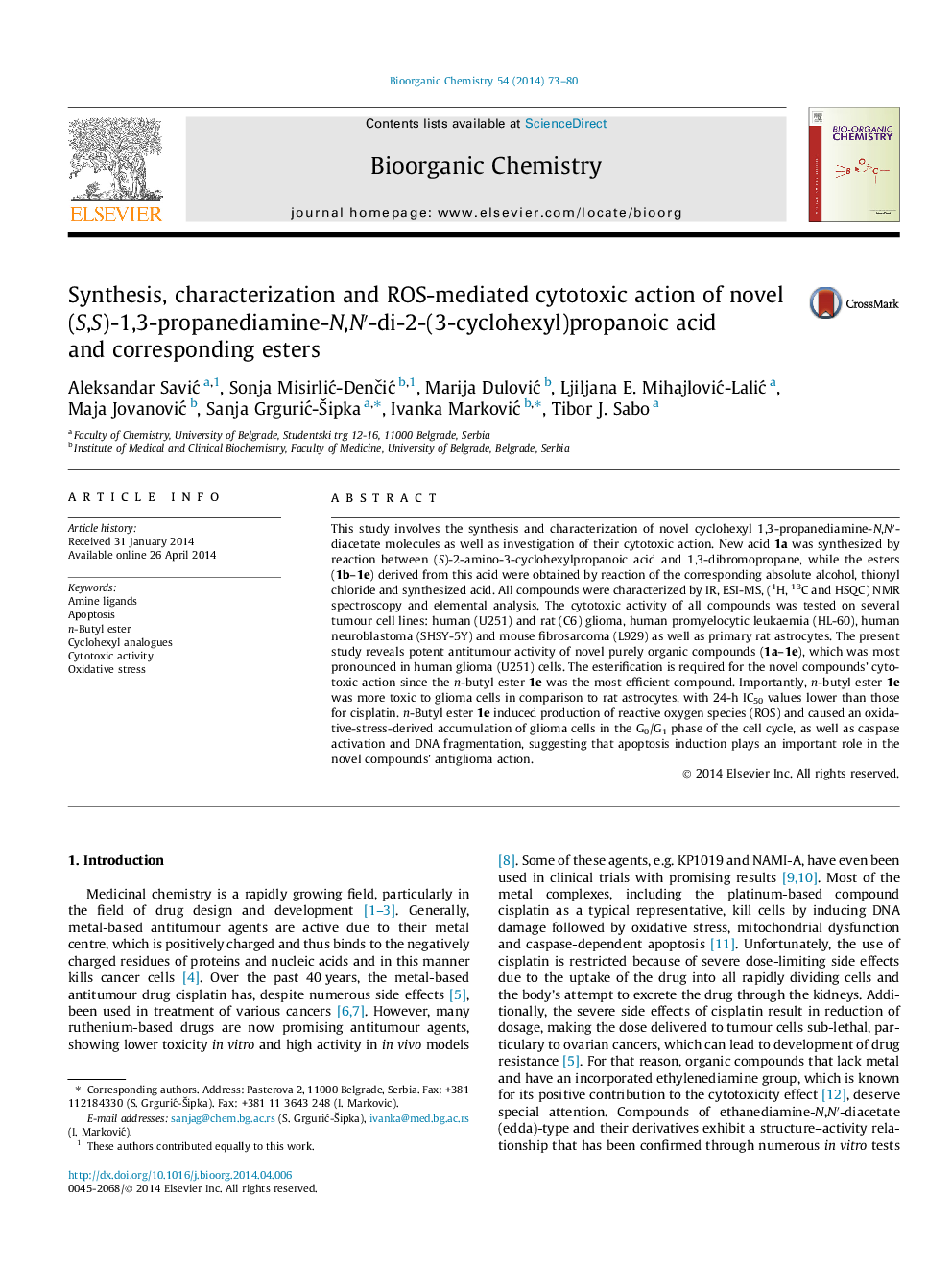| کد مقاله | کد نشریه | سال انتشار | مقاله انگلیسی | نسخه تمام متن |
|---|---|---|---|---|
| 1356005 | 1500460 | 2014 | 8 صفحه PDF | دانلود رایگان |

• Report of new cyclohexyl 1,3-propanediamine-N,N′-diacetate-type molecules.
• Assessment of in vitro anticancer activity against different tumour cell lines.
• 1d and 1e had higher cytotoxicity against glioma cells than primary astrocytes.
• 1e stimulated ROS production in glioma cells, leading to apoptosis induction.
This study involves the synthesis and characterization of novel cyclohexyl 1,3-propanediamine-N,N′-diacetate molecules as well as investigation of their cytotoxic action. New acid 1a was synthesized by reaction between (S)-2-amino-3-cyclohexylpropanoic acid and 1,3-dibromopropane, while the esters (1b–1e) derived from this acid were obtained by reaction of the corresponding absolute alcohol, thionyl chloride and synthesized acid. All compounds were characterized by IR, ESI-MS, (1H, 13C and HSQC) NMR spectroscopy and elemental analysis. The cytotoxic activity of all compounds was tested on several tumour cell lines: human (U251) and rat (C6) glioma, human promyelocytic leukaemia (HL-60), human neuroblastoma (SHSY-5Y) and mouse fibrosarcoma (L929) as well as primary rat astrocytes. The present study reveals potent antitumour activity of novel purely organic compounds (1a–1e), which was most pronounced in human glioma (U251) cells. The esterification is required for the novel compounds’ cytotoxic action since the n-butyl ester 1e was the most efficient compound. Importantly, n-butyl ester 1e was more toxic to glioma cells in comparison to rat astrocytes, with 24-h IC50 values lower than those for cisplatin. n-Butyl ester 1e induced production of reactive oxygen species (ROS) and caused an oxidative-stress-derived accumulation of glioma cells in the G0/G1 phase of the cell cycle, as well as caspase activation and DNA fragmentation, suggesting that apoptosis induction plays an important role in the novel compounds’ antiglioma action.
Figure optionsDownload as PowerPoint slide
Journal: Bioorganic Chemistry - Volume 54, June 2014, Pages 73–80